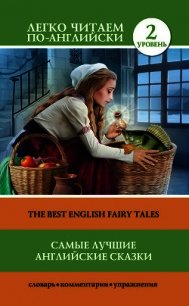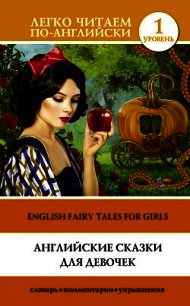More English Fairy Tales - Jacobs Joseph (читать книги полностью txt) 📗
If I understand Mr. Nutt rightly (Folk-Lore, iv, 135, seq.), he is inclined to think, from the evidence of the hero-tales which have the unsavoury motif of the Unnatural Father, that the original home of the story was England, where most of the hero-tales locate the incident. I would merely remark on this that there are only very slight traces of the story in these islands nowadays, while it abounds in Italy, which possesses one almost perfect version of the formula (Miss Cox, No. 142, from Sardinia).
Mr. Newell, on the other hand (American Folk-Lore Journal, ii., 160), considers Catskin the earliest of the three types contained in Miss Cox’s book, and considers that Cinderella was derived from this as a softening of the original. His chief reason appears to be the earlier appearance of Catskin in Straparola, [4] 1550, a hundred years earlier than Cinderella in Basile, 1636. This appears to be a somewhat insufficient basis for such a conclusion. Nor is there, after all, so close a relation between the two types in their full development as to necessitate the derivation of one from the other.
LXXXIV. STUPID’S CRIES
Source.—Folk-Lore Record, iii., 152-5, by the veteran Prof. Stephens. I have changed “dog and bitch” of original to “dog and cat,” and euphemised the liver and lights.
Parallels.—Prof. Stephens gives parallels from Denmark. Germany (the Grimms’ Up Riesensohn) and Ireland (Kennedy, Fireside Stories, p. 30).
LXXXV. THE LAMBTON WORM
Source.—Henderson’s Folk-Lore of Northern Counties, pp. 287-9, I have rewritten, as the original was rather high falutin’.
Parallels.—Worms or dragons form the subject of the whole of the eighth chapter of Henderson. “The Laidly Worm of Spindleston Heugh” (No. xxxiii.) also requires the milk of nine kye for its daily rations, and cow’s milk is the ordinary provender of such kittle cattle (Grimms’ Teut. Myth. 687), the mythological explanation being that cows = the clouds and the dragon = the storm. Jephtha vows are also frequent in folk-tales: Miss Cox gives many examples in her Cinderella, p. 511.
Remarks.—Nine generations back from the last of the Lambtons, Henry Lambton, M.P., ob. 1761, reaches Sir John Lambton, Knight of Rhodes, and several instances of violent death occur in the interim. Dragons are possibly survivals into historic times of antedeluvian monsters, or reminiscences of classical legend (Perseus, etc.). Who shall say which is which, as Mr. Lang would observe.
LXXXVI. WISE MEN OF GOTHAM
Source.—The chap-book contained in Mr. Hazlitt’s Shaksperian Jest Book, vol. iii. I have selected the incidents and modernised the spelling; otherwise the droll remains as it was told in Elizabethan times.
Parallels.—Mr. Clouston’s Book of Noodles is little else than a series of parallels to our droll. See my List of Incidents under the titles, “One cheese after another,” “Hare postman,” “Not counting self,” “Drowning eels.” In most cases Mr. Clouston quotes Eastern analogies.
Remarks.—All countries have their special crop of fools, Boeotians among the Greeks, the people of Hums among the Persians (how appropriate!), the Schildburgers in Germany, and so on. Gotham is the English representative, and as witticisms call to mind well-known wits, so Gotham has had heaped on its head all the stupidities of the Indo-European world. For there can be little doubt that these drolls have spread from East to West. This “Not counting self” is in the Gooroo Paramastan, the cheeses “one after another” in M. Riviere’s collection of Kabyle tales, and so on. It is indeed curious how little originality there is among mankind in the matter of stupidity. Even such an inventive genius as the late Mr. Sothern had considerable difficulty in inventing a new “sell.”
LXXXVII. PRINCESS OF CANTERBURY
Source.—I have inserted into the old chap-book version of the Four Kings of Colchester, Canterbury, &c., an incident entitled by Halliwell “The Three Questions.”
Parallels.—The “riddle bride wager” is a frequent incident of folk-tales (see my List of Incidents); the sleeping tabu of the latter part is not so common, though it occurs, e.g., in the Grimms’ Twelve Princesses, who wear out their shoes with dancing.
4
It is practically in Des Perier's Recreations, 1544.


